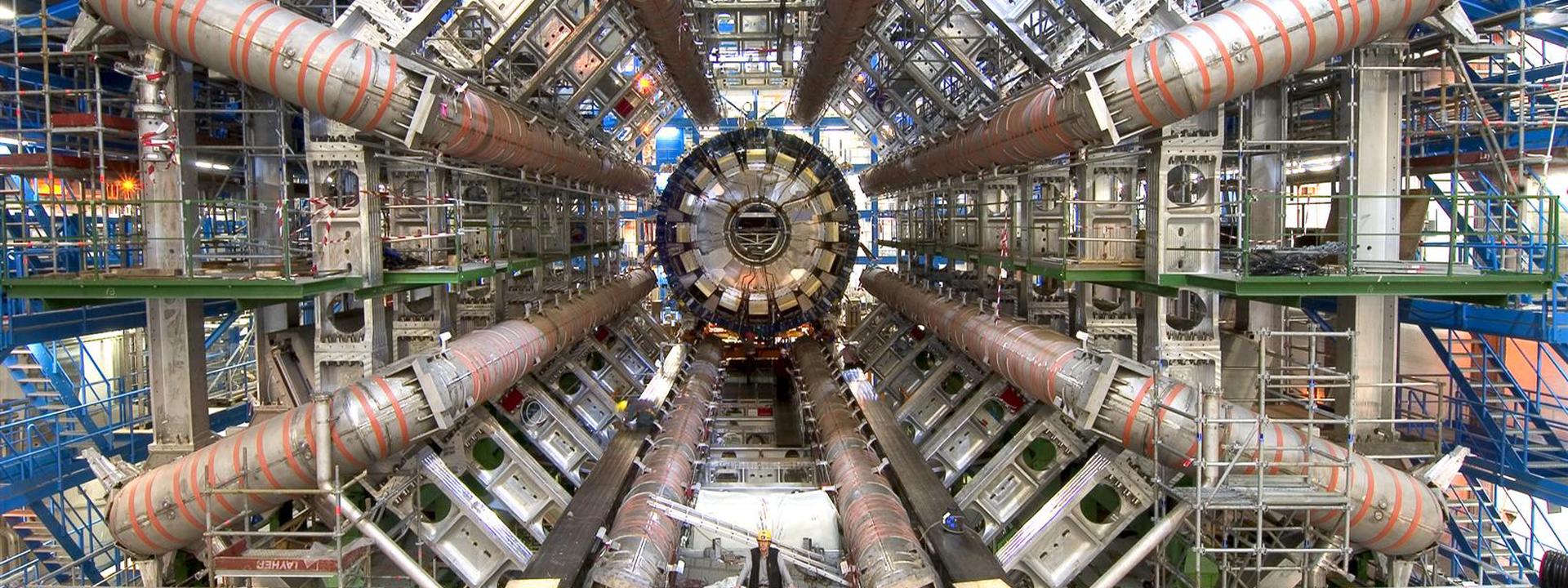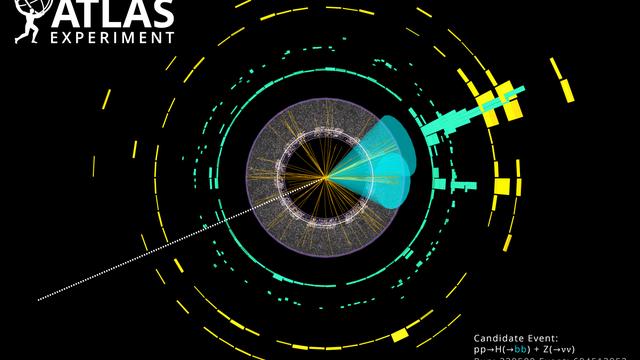
Research Projects
Participación del IFAE en el experimento ATLAS en el LHC: física y operación del detector
Participación del IFAE en el experimento ATLAS en el LHC: física y operación del detector
Since 2010, the Large Hadron Collider (LHC) at CERN explores a new energy frontier in experimental particle physics. During Run 1 (2010-2012), the ATLAS and CMS experiments recorded each up to 25 fb-1 of proton-proton collisions at center-of-mass energies of 7 and 8 TeV, pursuing an ambitious scientific program that culminated in 2012 with the discovery of the Standard Model (SM) Higgs boson. After a 2.5-years long shutdown, on June 2015 the proton-proton colisions were restarted at an energy of 13 TeV. During Run 2 (2015-2018), the LHC performance was exceptional, and a large data sample of 139 fb-1 of proton-proton collisions was recorded by the ATLAS experiment. From January 2019 until February 2022, the LHC is undergoing its second long-shutdown (LS2) since the beginning of operations in 2009, devoted to the consolidation, maintenance and upgrade work of the ATLAS detector and the LHC accelerator complex. During Run 3 (2022-2024) the collision energy will be further increased to 13.6 TeV and the recorded integrated luminosity will reach ~180 fb-1. The combination of higher collision energy, the large integrated luminosity, and improvements in the reconstruction algorithms, will significantly enhance the physics potential of Run 3 compared to Run 2.
The proposed project is part of a research line that started in 1992, when IFAE joined the ATLAS Collaboration, making critical contributions to the initial detector, in the Tile Calorimeter (TileCal) and related electronics and the Trigger system, and participating in all phases of R&D, construction, installation and commissioning of the detector. This project represents a natural continuation of projects RTI2018-096930-B-I00, FPA2015-69260-C3-1-R, FPA2012-38713, and FPA2009-07496, which covered IFAEs participation in the ATLAS experiment from the start of Run 1 till the LS2. During Run 2, the IFAE group was strongly involved in the operation of the TileCal detector and the Trigger system, and deployed a very strong and rich physics program, leading many analyses published by ATLAS using a partial Run 2 dataset (up to 36 fb-1). During the LS2 the IFAE group is participating in the maintenance and commissioning of the TileCal detector and the Trigger system in preparation for the start of Run 3 in 2022, and is completing a large number of publications based on the full Run 2 dataset. The overarching goals of this project are to ensure the optimal participation of the IFAE group in the scientific exploitation of the ATLAS experiment during Run 3, and to fulfill IFAEs responsibilities in the ATLAS detector subsystems where the group participates.
The planned activities for this project can be summarized as follows:
- Commissioning and operation of the ATLAS detector subsystems with IFAE participation (TileCal and Trigger) during Run 3.
- Deployment of a competitive physics program exploiting the full Run 2 and Run 3 datasets, focused on searches for new phenomena and measurements of the Higgs boson and the top-quark.
- Optimization studies on physics objects of particular relevance to the planned physics program.
- Upgrade of the Tier-3 computing facility to satisfy the needs of the physics analysis program.



